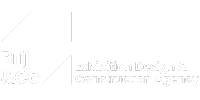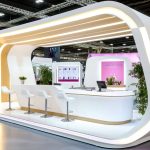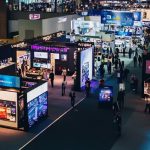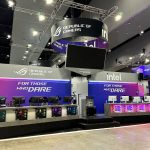Why sustainability belongs at the centre of booth design
Trade shows concentrate material, energy, and transport into a few fast days. Without intention, waste piles up and budgets follow it to the bin. Working with experienced exhibition stand builders flips the script: you reduce impact while increasing reliability and total ROI. The core idea is simple. Design for reuse, build with sustainable materials, shrink freight, and measure what you save. You end up with smarter trade show stands that set a higher bar for brand experience and cost control.
Set the brief: sustainability outcomes tied to real constraints.
A green booth is not a mood board; it is a set of measurable outcomes. Define what success means before sketching a wall. Maybe it is cutting the crate count by a third, reusing 80% of structures for a year, or eliminating single-use print. Your builder then backs into design choices that hit those numbers. When product display stands and walls are specified to reuse standards from day one, later shows become faster, cheaper, and cleaner to run.
Design for longevity first, then skin for each show
Durability beats novelty when you want lower impact. Frame your booth as a base kit with interchangeable faces. Structural cores—aluminium extrusion, engineered timber, or steel—stay constant. Surfaces change via reusable graphics and swappable shelves. This “kit plus skins” approach lets your team refresh messaging in hours, not days, and turns large format printing from a consumable into an asset you rotate. With the right tolerances and fasteners, your booth feels bespoke each time while quietly reusing most of its bones.
Modular stands that adapt across venues and sizes
Show footprints shift. One month you’re on a 6×3 aisle; next quarter, a 6×6 corner or a 9×6 peninsula. True modular stands handle that without a rebuild. Ask your builder to design in modules that connect at standard lengths and heights with hidden connectors and integrated cable channels. Counters, light towers, and product display stands should be detachable and reconfigurable without new fabrication. You gain consistency for staff, simpler ops for contractors, and dramatically less waste as seasons change.
Materials that reduce impact without looking “worthy”
Sustainability fails if it looks flimsy. Choose materials for performance and circularity. Aluminium frames are light, strong, and endlessly recyclable; FSC-certified plywood gives warm tactility for counters and plinths; PET felt panels (often from recycled bottles) add acoustic control; low-VOC paints protect installers and visitors. For surfaces, tension-fabric graphics on recyclable polyester keep shipping volume low. Your exhibition stand builders team can demonstrate take-back options, ensuring retired fabrics become feedstock rather than landfill.
Lighting that pulls its weight in watts and wow
Lighting sells the stand—and can sink the power bill. Specify high-efficiency LED rails with narrow beam angles to highlight hero products and warm flood for hospitality zones. Use dimmable drivers and scene presets so staff can switch from “demo” to “presentation” without extra fixtures. Cable neatly inside extrusion channels to reduce trip hazards and setup time. When lighting is purposeful, you need fewer fixtures, less draw, and better photographs that extend your booth’s life online.
Freight and packing: the hidden emissions you can control
Every kilogram you don’t ship is carbon and cash saved. Design components to flat-pack into standard cases that two people can handle. Replace heavy MDF with honeycomb cores where structure allows. Coil cables to explicit lengths and label both ends so install teams do not over-specify. A single crate removed from your manifest pays for thoughtful engineering in weeks. Over a year of shows, freight savings often outpace the premium on quality materials.
Graphics that change fast and go the distance
Large PVC boards are easy to print and hard to reuse. Shift to silicone edge graphics (SEG) for walls and lightboxes, and to magnetised panels for counters. Maintain a master grid so every headline, icon, and spec hits the same anchor points across sizes. When your internal team can swap reusable graphics in minutes, you stop reprinting entire walls for minor copy edits. Protect faces with slipcovers during install and strike; the fewer scuffs, the longer each piece stays in rotation.
Product displays that demonstrate sustainability by design.
Your product display stands are where visitors decide whether your brand means what it says. Build plinths with replaceable tops and claws so mount points can change as your range evolves. Route power invisibly and standardise on a single connector type for fast swaps. For hardware samples, add discreet QR plates so brochures can be accessed on phones. A display that looks clean day three—no dangling cables, no taped edges—does more for your sustainability claim than any wall text.
Rentals, hybrids, and when custom still makes sense
All-rental booths are efficient for one-off shows; full-custom shines when reused heavily. The sweet spot for many brands is a hybrid: rent the substructure and storage while owning signature elements that carry your identity and ergonomics. Your exhibition stand builders Sydney partner can track utilisation: after three outings, any frequently rented piece becomes a candidate for ownership, so you lock in ROI and reduce transport variability.
Operations: fewer tools, faster installs, safer crews
Sustainability is also about people. Design tool-lite connections—thumb screws, cam locks—so installs are quicker and less fatiguing. Pre-wire light towers with labelled plug-and-play looms. Colour-code cases by zone so crews roll the right crate to the right corner. Reduced hours on site cut labour emissions, overtime, and risk. An efficient stand protects the team that builds it and gives them energy to polish the details that visitors notice.
Hospitality that doesn’t create a rubbish mountain
Food and coffee draw crowds, waste draws complaints. Choose bulk brew with washable cups where venue rules allow, or certified compostables routed to event organics. Offer water refill rather than pallets of bottles. Display a simple sign about how to compost or return cups so visitors help you keep the booth tidy. Small cues make behaviour change feel natural and keep bins from overflowing mid-afternoon.
Measure what matters and report it like a pro.
If you do not measure, you will slide back to convenience. Track three numbers: percentage of structure reused, kilograms of freight shipped, and kilograms of waste generated. Add a qualitative note: what broke, what scuffed, what took too long. Share a one-page post-show with photos and a “next show” plan. Over a year, those pages prove the case for your modular kit and secure the budget for further improvements.
Creative storytelling that makes sustainability part of the experience
Visitors will not read a white paper at your stand. Instead, show your choices. A small tag on the counter can note “FSC timber, reused since 2024.” A short looping clip can reveal the flat-pack journey from the Sydney workshop to the show floor. A framed call-out can explain how your old graphics became acoustic panels. This is not bragging; it is context that encourages better questions and gives your reps a positive opening line.
Common pitfalls that look green but miss the point.
Do not over-invest in one-off “eco gadgets” that add complexity without cutting waste. Avoid exotic materials that are hard to repair or recycle locally. Beware giant living walls that need daily water and specialised maintenance unless they are core to your story. And resist printing date-stamped offers on expensive fabrics; keep time-sensitive content to small, replaceable inserts so the main assets live through multiple campaigns.
Budget math: why greener often equals cheaper
Greener booths feel premium because they last. The first build may cost slightly more; from the second show onward, the curves cross. Reuse removes re-fabrication, freight drops with lighter components, install hours fall with better engineering, and graphics last when protected. Add the marketing dividend: a stand that photographs beautifully under efficient lighting multiplies your reach in social and sales decks. Measured honestly, sustainability is not a cost centre; it is a margin strategy.
A year-long plan you can implement right now
Quarter one: audit current assets, retire what cannot be reused, and define your reuse and freight targets. Quarter two: commission a modular base kit with SEG walls, reusable counters, and adaptable product display stands; standardise lighting and cable runs. Quarter three: roll the kit across two shows, measure freight and waste, and fix pain points. Quarter four: refresh faces only—new reusable graphics, updated messaging—while the structure stays intact. Begin year two with a lighter manifest, faster installs, and a team that knows the choreography.
How to brief your builder for success
Invite your exhibition stand builders partner early and be specific. Share floor plans for the year, the heaviest product you’ll mount, the brightest zone you need, and storage realities. Ask for exploded views of modules, cable diagrams, and a packing plan with weights. Request material data sheets and end-of-life pathways. A clear brief turns sustainability from an aspiration into a build spec everyone can follow under pressure.
Final word: design once, reuse often, tell the story well
Sustainable booths are not quieter; they are smarter. Specify sustainable materials, insist on modular stands, and treat reusable graphics as a living system. Partner with trade show stand builders in Melbourne & Sydney who design for longevity and speed. You will spend less over the season, move faster on site, and leave a smaller footprint—while your trade show stands look sharper and perform better where it counts: sparking conversations that become pipeline long after the lights go down.
